Sherlock Holmes Blu-ray Movie
HomeSherlock Holmes Blu-ray Movie 
Kino Lorber | 1922 | 85 min | Not rated | Dec 13, 2011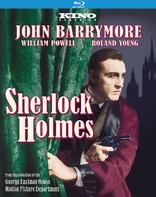
Movie rating
6.1 | / 10 |
Blu-ray rating
| Users | 0.0 | |
| Reviewer | 3.0 | |
| Overall | 3.0 |
Overview
Sherlock Holmes (1922)
When a young prince is accused of a crime that could embroil him in international scandal, debonair supersleuth Sherlock Holmes comes to his aid, and quickly discovers that behind the incident lurks a criminal mastermind eager to reduce Western civilization to anarchy. Adapted from the hugely popular stage version of Arthur Conan Doyle's stories (by William Gillette), SHERLOCK HOLMES not only provided Barrymore with one of his most prestigious early roles, but also presented the screen debuts of two notable actors: William Powell (The Thin Man) and Roland Young (Topper).
Starring: John Barrymore, William Powell (I), Roland Young, Carol Dempster, Hedda HopperDirector: Albert Parker
| Drama | 100% |
Specifications
Video
Video codec: MPEG-4 AVC
Video resolution: 1080p
Aspect ratio: 1.34:1
Original aspect ratio: 1.33:1
Audio
English: LPCM 2.0
Subtitles
None
Discs
25GB Blu-ray Disc
Single disc (1 BD)
Playback
Region A (B, C untested)
Review
Rating summary
| Movie | 3.0 | |
| Video | 3.5 | |
| Audio | 4.0 | |
| Extras | 0.5 | |
| Overall | 3.0 |
Sherlock Holmes Blu-ray Movie Review
What once was lost, now is...well, dull.
Reviewed by Casey Broadwater December 19, 2011By most estimations, Arthur Conan Doyle’s Sherlock Holmes is the most prolific character in all of cinema history, appearing in over 200 films, from a one-minute short in 1900 to 2011’s A Game of Shadows, with Robert Downey, Jr. as the Baker Street Wizard. The silent era, in particular, produced a number of small-scale, one- and two-reel Holmes adaptations, many of which have been irretrievably lost to time. 1922’s Sherlock Holmes, a star-studded affair directed by Albert Parker--who would go on to make the Douglas Fairbanks swashbuckler, The Black Pirate--was the first major film to feature the pipe-toting detective, played by screen legend John Barrymore, but it too was considered lost until the 1970s, when archival elements surfaced at the George Eastman House, prompting an extensive restoration by film historians Kevin Brownlow and William K. Everson. Even then, the film wasn’t widely seen until another restoration was undertaken in 2001. By this time, silent film fans and Sherlock Holmes enthusiasts had had several decades to speculate about the movie and mentally hype it up, and when they finally got to see it, they were mostly disappointed by a rather pedestrian mystery with a muddled plot and little going for it besides its star-power.
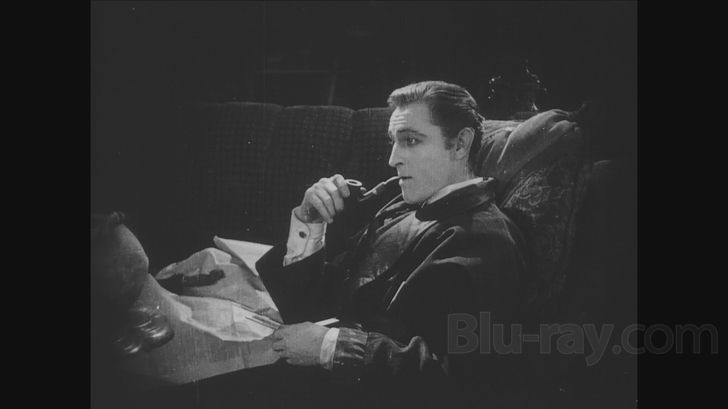
The film’s lengthy prologue is actually a prequel of sorts and introduces Holmes and his pal Watson (Roland Young) as conspicuously old-looking classmates at Cambridge. (Barrymore was 40 when he made the film.) Holmes has yet to figure what he wants to do after graduating, but he considers himself “a student of life,” and spends most of his time observing people and making his characteristic deductions. He gets a nudge toward his fated path when the young German Prince Alexis (Reginald Denny) is wrongfully accused of stealing “the Atlantic funds” and calls upon Holmes’ investigative powers in order to avoid causing a major international incident. The real thief is actually a henchman, Foreman Wells (William Powell), acting under orders from the nefarious Professor Moriarty (Gustav von Seyffertitz), who maintains a hideout deep in London’s east-end Chinatown.
Moriarty, as readers of the stories know, will become Holmes’ lifelong nemesis. While he’s normally portrayed as suavely sinister, here Moriarty just looks like a total lunatic, with a shock of stringy hair and enormous eyebrows that flare comically upwards. He also wears one of the most ridiculously oversized top hats imaginable. When Holmes and Moriarty finally meet, the uber-villian caps off their awkward conversation with a line most folks most would attribute to Rick Moranis in Spaceballs: “You have seen me for the first time and the last time.” Ah, but that’s what you think, Professor.
In a frustrating turn of events--for us, the audience, mostly--the whole bit with the missing “Atlantic funds” turns out to be big, stinking red herring. What’s really important in the first act is that Prince Alexis is engaged to Rose Faulkner (Peggy Bayfield), a British commoner, though he regretfully breaks off the relationship when his two older brothers are killed in a motor-car accident, putting him next in line for the throne. As sorry as he may be, this is still a jerk move, and it leaves Rose destitute and suicidal. I should also mention here that the film gives Sherlock Holmes--the perpetual bachelor--a love interest, Rose’s sister Alice, played by D.W. Griffith go-to girl Carol Dempster. This, of course, is where Sherlock Holmes fans throw their hands in the air and cry foul. Holmes is most definitely not a romantic, and certainly not the sort to fawn wide-eyed over a woman the first moment he lays eyes on her. I mean, this guy’s a snazzy dresser, a witty conversationalist, and he has an intimate life-bond with his buddy Watson--draw your own J. Edger Hoover-ish conclusions.
Anyway, from here the film jumps forward several years and gives us the Holmes that we’re more accustomed to, a seasoned crime-solver who operates out of his cluttered home at 221 Baker Street, where he entertains guests by making ingenious inferences about what they’ve been up to lately based solely on the state of their clothing. We get down to business once again when Prince Alexis becomes embroiled in yet another possible scandal. He’s newly engaged to a member of the Russian royal family, but there are some incriminating love letters in Alice’s possession that link Alexis to Rose, who has jumped off a cliff after the devastating turn her life has taken. High society would deem him morally responsible for her death, so it’s imperative that the letters are never discovered. Naturally, Moriarty, always willing to sow some chaos, wants to get his spindly-fingered hands on them and cause a fall-out between the two royal families. Or something. Moriarty’s end-game is never entirely clear.
What is clear, however, is that this take on Sherlock Holmes pales in comparison to the series of films starring Basil Rathbone that were produced between 1939 and 1946. The story is poorly constructed--it barely qualifies as a mystery--and although John Barrymore certainly has a Holmesian look, his Sherlock lacks the depth of other portrayals. To be fair, the fault doesn’t lie with Barrymore; the film itself sanitizes and de-barbs Holmes until he just isn’t very interesting anymore. I mean, really; what sort of Sherlock Holmes falls in love and goes on a honeymoon at the end of the film?
Still, there are reasons to watch 1922’s Sherlock Holmes. It is one of Barrymore’s earliest films--which gives it historical significance-- and it marks the screen debuts of both Roland Young and William Powell, who would both go on to have careers in comedy. (Powell is best known for the Thin Man series, in which he was part of a husband/wife detective duo.) It also features some impressive production values, as some scenes were shot on-location in London and Switzerland--a real rarity at the time. Of course, we’re lucky we even can watch Sherlock Holmes today, considering how it was presumed lost for several decades. When it was finally found, Brownlow and Everson spent years reassembling the raw footage with input from director Albert Parker, who lived just long enough to see his film restored.
Sherlock Holmes Blu-ray Movie, Video Quality 
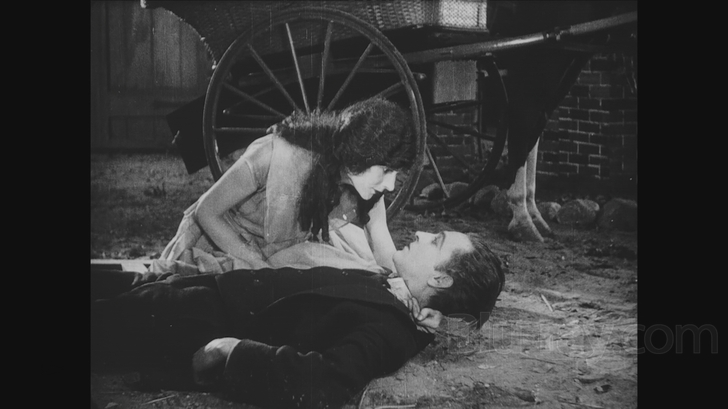
Based off of the film's 2001 restoration—which added back the original intertitles and other snippets of scenes—Kino's 1080p/AVC-encoded transfer of Sherlock Holmes is a solid step up from their 2009 DVD release. The most noticeable increase, of course, comes in overall clarity; the image now looks much more clearly resolved, with high definition detail visible in the texture of John Barrymore's iconic face, the threading of his costumes, and yes, Gustav von Seyffertitz' ridiculous eyebrows. The tonal balance of the black and white picture seems to be an exercise in compromise. Black levels are sometimes elevated and take on a slightly milky quality, but you can tell this was done to preserve details in the shadows. Otherwise, the image would probably look severely crushed. A similar compromise was struck in regards to the 1.33:1 framing. Because of the nature of the hand-cranked cinematography, the bottom and top of the frame occasionally jitter up and down. Kino probably could've cropped the picture slightly to avoid this, but they've opted—wisely, I think—to present the entirety of the frame. Other restorative decisions seem similarly based on preserving the integrity of the image. Grain looks natural—no noticeable DNR here—and there are no signs of edge enhancement. Of course, as with most silent films, you can expect to see a good deal of print damage—heavy scratches, white specks, and brightness fluctuations—but it would be nearly impossible to clean these up entirely, even with a frame-by-frame restoration, as the process would inevitably leave behind digital artifacts. Overall, I think this is a satisfying Blu-ray presentation, although it doesn't compare to some of Kino's other silent film releases.
Sherlock Holmes Blu-ray Movie, Audio Quality 
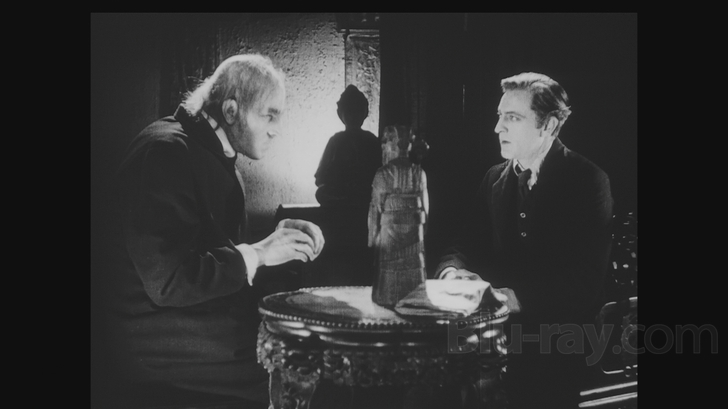
It would've been nice to have some additional audio options, but there's nothing wrong with the only track available on the disc, an organ score by Ben Model of the Museum of Modern Art, presented in Linear PCM 2.0 stereo. The music was performed on a Miditzer Virtual Theatre Organ—a synthesized software version of a Wurlitzer pipe organ—but unless you're some kind of organ expert, I suspect you won't be able to tell a difference between this and the real thing. The score is appropriately old-timey and suits the tone of the film nicely. All intertitles are in English, and there are no subtitle options available.
Sherlock Holmes Blu-ray Movie, Special Features and Extras 
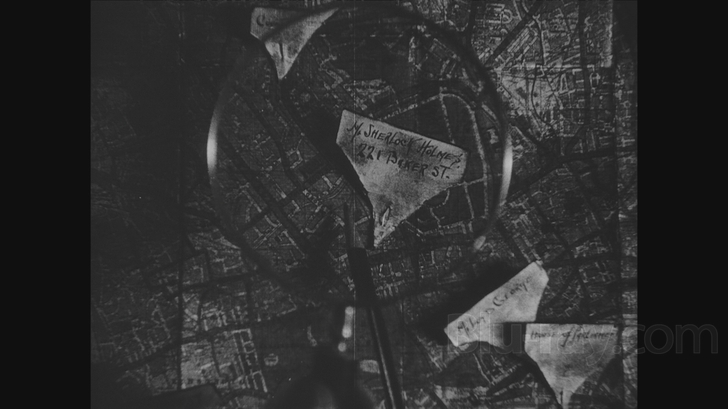
Unfortunately, the only bonus materials on the disc are high definition trailers for The Complete Metropolis, Moroder's Metropolis, and Battleship Potemkin.
Sherlock Holmes Blu-ray Movie, Overall Score and Recommendation 
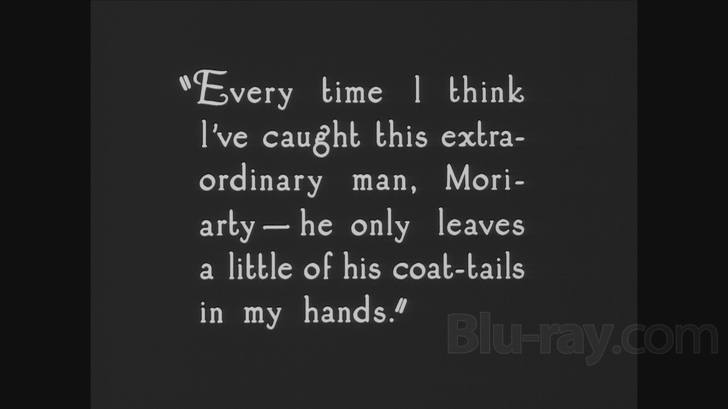
It's always a disappointment when you wait and wait for something and it turns out to be less than you thought it would be. Such is the case with 1922's Sherlock Holmes, which was lost for decades and—when silent film fanatics and Sherlock Holmes freaks finally got to see it—turned out to be dull and confusing. Yes, it stars the immortal John Barrymore, but he's far from the best onscreen Sherlock. (My vote goes to the awesomely named Basil Rathbone.) Still, there is historical value in seeing the film, especially if you're interested in the careers of Barrymore and his co-stars, William Powell and Roland Young.
Similar titles
Similar titles you might also like

Gideon of Scotland Yard
Choice Collection
1958

Hell's Angels 4K
Magnascope Road-Show Version
1930

Hamlet
1948

The Entertainer
1960

Pittsburgh
1942

Underground
1928

Black Narcissus
1947

Stage Fright
Warner Archive Collection
1950

Salome
1953

There's No Tomorrow
Sans Lendemain
1939

Darling
1965

Smiley's People
1982

Gosford Park
Arrow Academy
2001

Bait
1954

High Hopes
1988

The Men
Battle Stripe
1950

The Servant
1963

You Never Know Women
1926

Richard III
1955

Address Unknown
1944